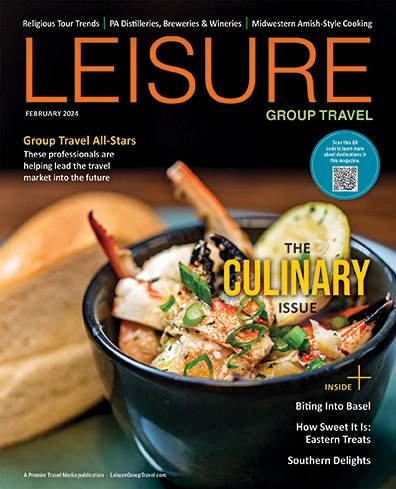We often start out to set up a new trip, excited and optimistic that it will be successful − that is, that it will sell well and that we won’t lose our shirt financially on it. But somehow we often are in such a hurry to get it going that we forget to take the necessary steps in costing properly and in due diligence before releasing it for sale. From forgetting to cost in for your marketing and on tour expenses to mishandling volunteers, here are eight “don’ts” to use as guidance when trip planning.
l) Never assume you’ll fill the bus
If the coach you’re hiring has 40 seats and is charging you $400, don’t assume that $10 per person is the fee. You may never fill all 40 seats. What if you only sell 30 out of the 40? Who is paying for the 10 unsold seats? You are! Never assume you’ll fill the bus. Better to divide the $400 by only 20 and budget $20 per person as the coach costs. In that way, the first 20 to sign up cover your coach cost and additional participant signups constitute extra profit.
2) Don’t forget to cost in adequately for your marketing expenses
Just putting up a flyer on the bulletin board in the group’s clubhouse won’t do the trick. Most likely you’re going to have to schedule announcements in the group’s newsletter, create online invitations, budget for social media promotion and perhaps postage for direct mail, or paid ads in target publications, etc. Remember − if the tour does not succeed and you have to cancel it, those “upfront” marketing expenses are never recouped.
3) Don’t assume you can get a volunteer to lead the tour without paying him/her any salary, meals or other en route expenses
I learned this the hard way by assuming I would lead one of my early tours to Paris, only to land in the hospital the week before the tour was scheduled to depart and have to pay an emergency leader to take my place. Not assuming the cost of tour leader will cost you dearly.
4) Don’t forget to cost in a little margin for those niceties you may have forgotten in your budget
Things like stopping by the roadside to buy fruit for everyone on board, tipping a wonderful step-on guide whom you forgot to include in your costing, and so on.
5) Don’t assume folks can drop everything on their calendar and travel with you on short notice.
No matter how good “The Deal” you are offered by a cruise line or tour operator may be, accepting it can be counterproductive in that you end up competing with other trips you’ve already scheduled. Besides, is it really a good deal to accept Siberia in January or the Caribbean in hurricane season just to get an inexpensive price? Often these last-minute “good deal” offers do not allow for adequate promotional time. The provider is desperate and needs the booking n-o-w, not later.
6) Don’t accept just any company’s product
Check them out for reputation, fulfillment of legalities, etc. Many states require that a company be authorized to sell in that state. For example, here in California, my home state, companies wishing to promote their travel product must have a California Seller of Travel registration − that is a CST number listed on all their promotional material.
7) Sell optional travel insurance or better still, include it in your tour cost
Though it does increase the cost of the trip, some travel insurance companies will let you clump together all your bookings on a specific trip with one set price for everyone in the group, providing you have a minimum number. This can be a boon to older trip participants for whom individual travel insurance can be disproportionally expensive when it’s based on a person’s age.
8) Don’t let all these don’ts scare you!
They’re mentioned to protect you and your clients so that you don’t run into a serious problem later down the line.







